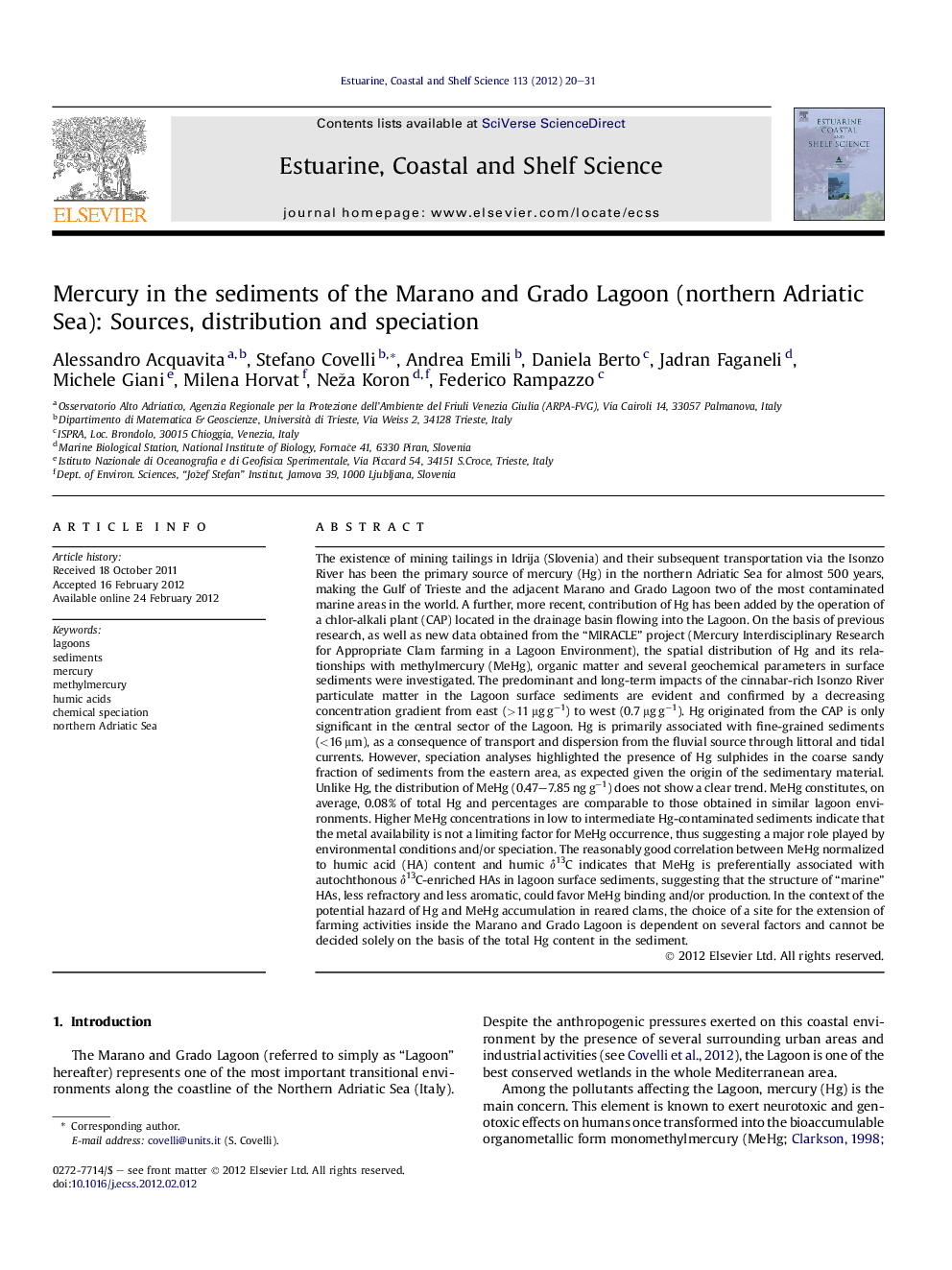| کد مقاله | کد نشریه | سال انتشار | مقاله انگلیسی | نسخه تمام متن |
|---|---|---|---|---|
| 4539988 | 1626682 | 2012 | 12 صفحه PDF | دانلود رایگان |

The existence of mining tailings in Idrija (Slovenia) and their subsequent transportation via the Isonzo River has been the primary source of mercury (Hg) in the northern Adriatic Sea for almost 500 years, making the Gulf of Trieste and the adjacent Marano and Grado Lagoon two of the most contaminated marine areas in the world. A further, more recent, contribution of Hg has been added by the operation of a chlor-alkali plant (CAP) located in the drainage basin flowing into the Lagoon. On the basis of previous research, as well as new data obtained from the “MIRACLE” project (Mercury Interdisciplinary Research for Appropriate Clam farming in a Lagoon Environment), the spatial distribution of Hg and its relationships with methylmercury (MeHg), organic matter and several geochemical parameters in surface sediments were investigated. The predominant and long-term impacts of the cinnabar-rich Isonzo River particulate matter in the Lagoon surface sediments are evident and confirmed by a decreasing concentration gradient from east (>11 μg g−1) to west (0.7 μg g−1). Hg originated from the CAP is only significant in the central sector of the Lagoon. Hg is primarily associated with fine-grained sediments (<16 μm), as a consequence of transport and dispersion from the fluvial source through littoral and tidal currents. However, speciation analyses highlighted the presence of Hg sulphides in the coarse sandy fraction of sediments from the eastern area, as expected given the origin of the sedimentary material. Unlike Hg, the distribution of MeHg (0.47–7.85 ng g−1) does not show a clear trend. MeHg constitutes, on average, 0.08% of total Hg and percentages are comparable to those obtained in similar lagoon environments. Higher MeHg concentrations in low to intermediate Hg-contaminated sediments indicate that the metal availability is not a limiting factor for MeHg occurrence, thus suggesting a major role played by environmental conditions and/or speciation. The reasonably good correlation between MeHg normalized to humic acid (HA) content and humic δ13C indicates that MeHg is preferentially associated with autochthonous δ13C-enriched HAs in lagoon surface sediments, suggesting that the structure of “marine” HAs, less refractory and less aromatic, could favor MeHg binding and/or production. In the context of the potential hazard of Hg and MeHg accumulation in reared clams, the choice of a site for the extension of farming activities inside the Marano and Grado Lagoon is dependent on several factors and cannot be decided solely on the basis of the total Hg content in the sediment.
Journal: Estuarine, Coastal and Shelf Science - Volume 113, 10 November 2012, Pages 20–31